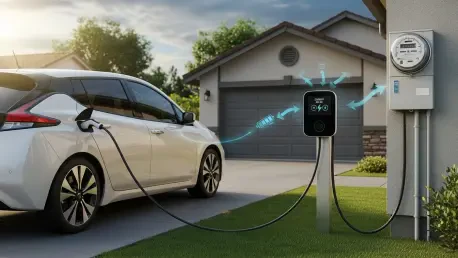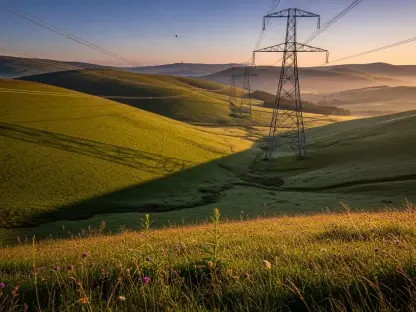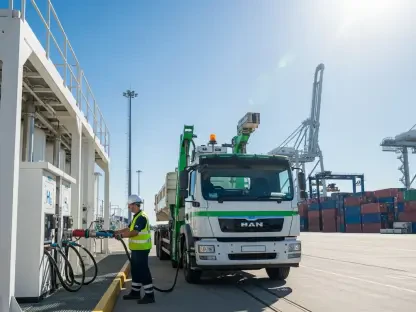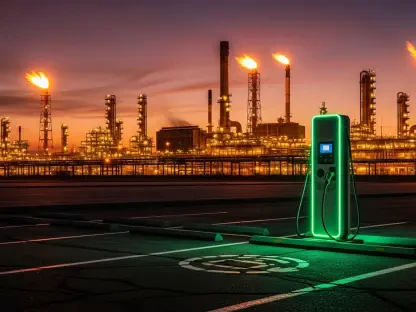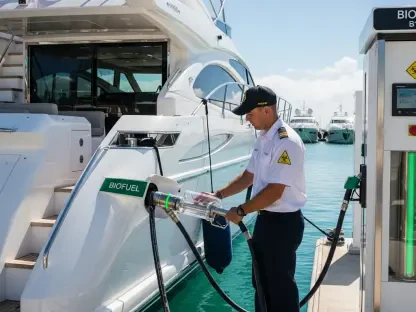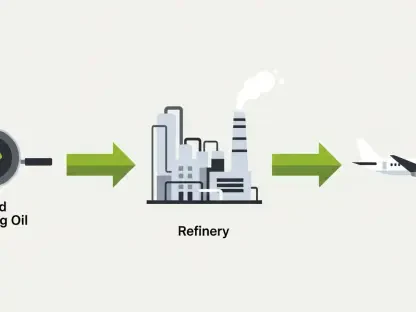Energizing the Future: Setting the Stage for V2G Market Analysis
Imagine a future where millions of electric vehicles (EVs) not only serve as personal transport but also act as dynamic power reserves, stabilizing energy grids during peak demand. This transformative vision is at the heart of vehicle-to-grid (V2G) technology, a system that enables bidirectional energy flow between EVs and power grids. With the global V2G market valued at USD 8.11 billion in 2025 and projected to surge to nearly USD 49.75 billion by 2034, reflecting a staggering compound annual growth rate (CAGR) of 28.13%, the potential for disruption in both energy and transportation sectors is immense. This analysis aims to dissect the driving forces, emerging patterns, and critical projections shaping this market, offering stakeholders a roadmap to navigate an evolving landscape. By exploring key trends and data, this examination underscores why V2G is becoming a cornerstone of sustainable energy solutions.
Decoding the V2G Market: Trends, Data, and Projections
Rising EV Adoption: A Catalyst for V2G Expansion
The unprecedented rise in electric vehicle adoption stands as a primary engine propelling the V2G market forward. As more individuals and corporations transition to EVs to meet environmental targets, the burden on existing power grids intensifies, creating an urgent need for innovative load management tools. V2G technology addresses this by allowing EVs to feed stored energy back to the grid during high-demand periods, alleviating pressure on infrastructure. For instance, in regions with dense EV populations, such as parts of Europe, early implementations have demonstrated substantial reductions in peak load stress. Yet, hurdles like battery wear from frequent energy cycling and consumer hesitation to participate in grid-support programs persist. Despite these challenges, the promise of cost savings through energy trading and enhanced grid stability continues to attract significant investment.
Synergy with Renewables: Balancing Energy Supply and Demand
Another pivotal factor accelerating V2G growth is its seamless integration with renewable energy sources like solar and wind. These sources, while eco-friendly, often generate power inconsistently, producing surplus during off-peak hours and shortages when demand spikes. V2G systems mitigate this by using EV batteries as temporary storage, capturing excess renewable energy and releasing it when needed. In areas with abundant solar resources, such as certain U.S. states, residential setups combining EVs and home solar panels are already leveraging V2G to optimize energy costs. Compared to static battery solutions, V2G offers mobility and flexibility, though inconsistent vehicle availability for grid support poses a risk. Scaling these systems could redefine energy networks, positioning V2G as an essential component of the clean energy shift.
Technological Innovations: Enhancing V2G Capabilities
Advancements in technology are reshaping how V2G systems interact with modern grids, driving efficiency and accessibility. Bidirectional charging is rapidly becoming a standard in new EV models, transforming vehicles into mobile power units capable of both drawing and supplying electricity. Meanwhile, intelligent energy management software is streamlining the complex interplay between EVs and grid operators, ensuring smoother transactions. Developments in electric vehicle supply equipment (EVSE) are also critical, with tailored infrastructure supporting two-way energy flow becoming more widespread. Standardization protocols, such as ISO 15118, are fostering interoperability across diverse systems and regions. These innovations signal a maturing market, poised to handle larger-scale deployments in urban hubs and commercial fleets over the coming years.
Regional and Segmental Insights: Mapping Market Dynamics
The V2G market exhibits varied growth patterns across geographies and segments, reflecting unique regional priorities and technological focuses. Europe, holding a dominant position currently, benefits from aggressive policy frameworks and substantial investments in EV infrastructure, setting a benchmark for others. On the component front, EVSE commands a leading share, highlighting its indispensable role in enabling bidirectional energy systems. Among applications, battery electric vehicles (BEVs) dominate the landscape, though plug-in hybrid electric vehicles (PHEVs) are projected to grow at an impressive CAGR of 28.59% from 2025 to 2034, showcasing diverse adoption trends. Addressing myths around battery degradation and tailoring solutions to local energy needs will be vital for sustained global expansion. These disparities underscore the importance of customized strategies to maximize V2G impact across different markets.
Market Projections: A Glimpse into 2034
Looking toward 2034, the V2G market is forecasted to reach a valuation of nearly USD 49.75 billion, driven by a robust CAGR of 28.13%. This growth trajectory is underpinned by increasing utility partnerships, which are leveraging V2G for load balancing through dynamic pricing models and demand-response initiatives. Large-scale implementations, particularly in urban centers and fleet operations, are expected to gain momentum, supported by declining battery costs and regulatory incentives. Households adopting EVs as home energy backups, especially alongside solar installations, will further amplify market potential. While scalability and infrastructure compatibility remain areas of focus, the convergence of technological progress and policy support paints a promising picture for V2G as a transformative force in energy management.
Reflecting on the Journey: Strategic Takeaways from V2G Insights
Looking back on this market analysis, the trajectory of V2G technology reveals a powerful intersection of innovation and necessity, bridging energy and mobility in unprecedented ways. The exploration highlighted how EV adoption, renewable energy integration, and technological advancements fueled a projected market leap to USD 49.75 billion by 2034. For stakeholders, the path forward involves actionable steps: utilities could prioritize V2G integration into grid planning through pilot programs with automakers, while manufacturers need to embed bidirectional charging as a core feature and educate consumers on financial perks. Businesses managing EV fleets stand to gain by investing in compatible infrastructure for cost efficiencies, and consumers could explore utility incentives to lower energy expenses. Moving into the future, fostering collaboration across sectors and aligning policies with technological readiness promises to unlock V2G’s full potential, ensuring grids become more resilient and sustainable for generations to come.
